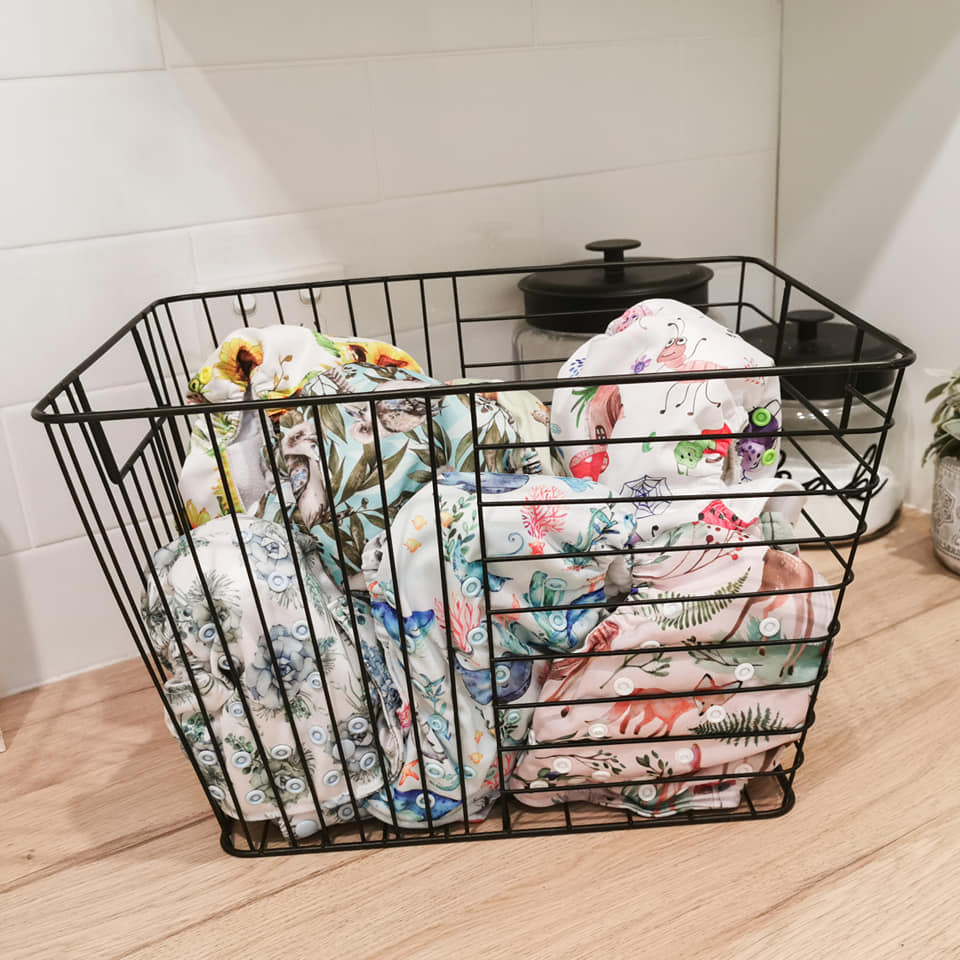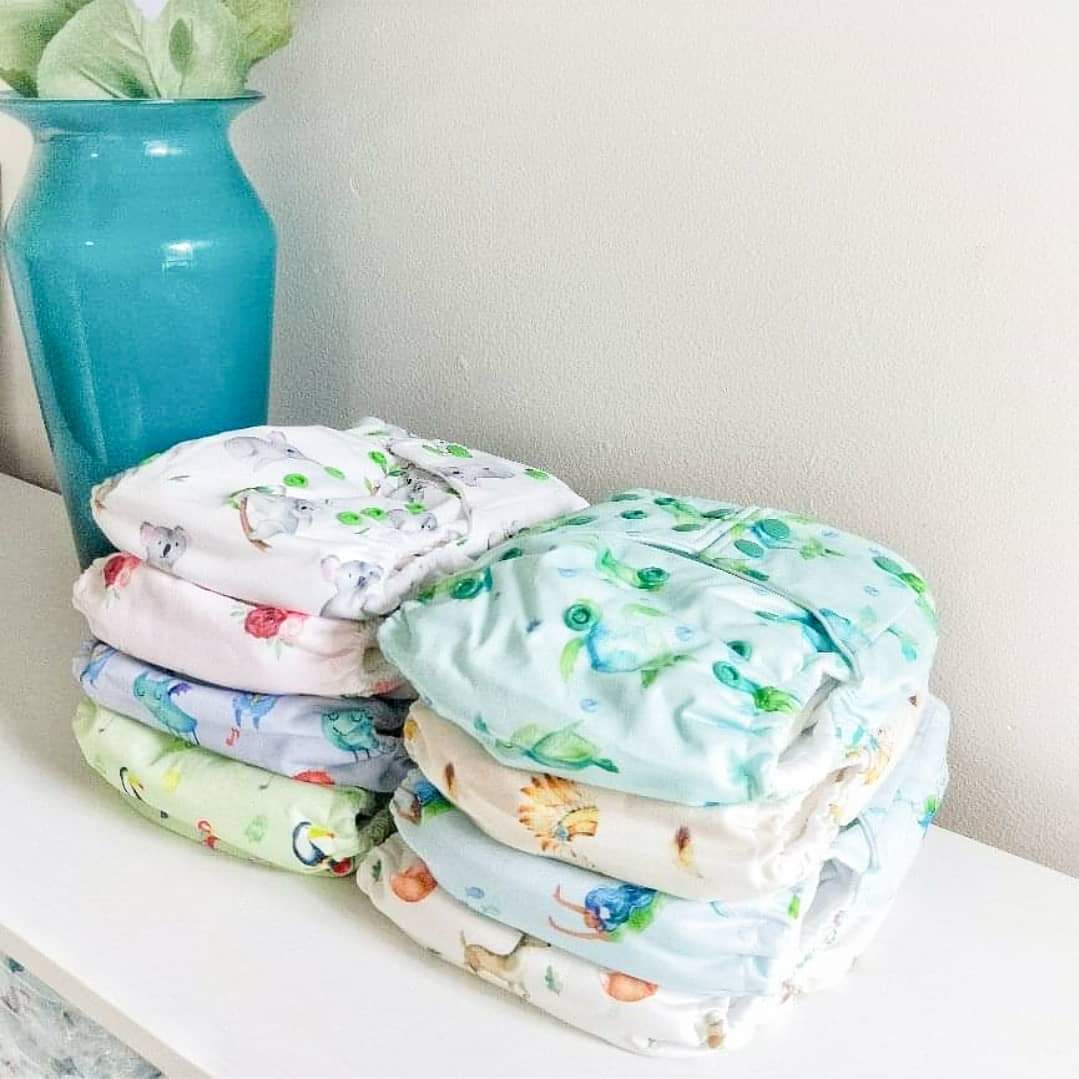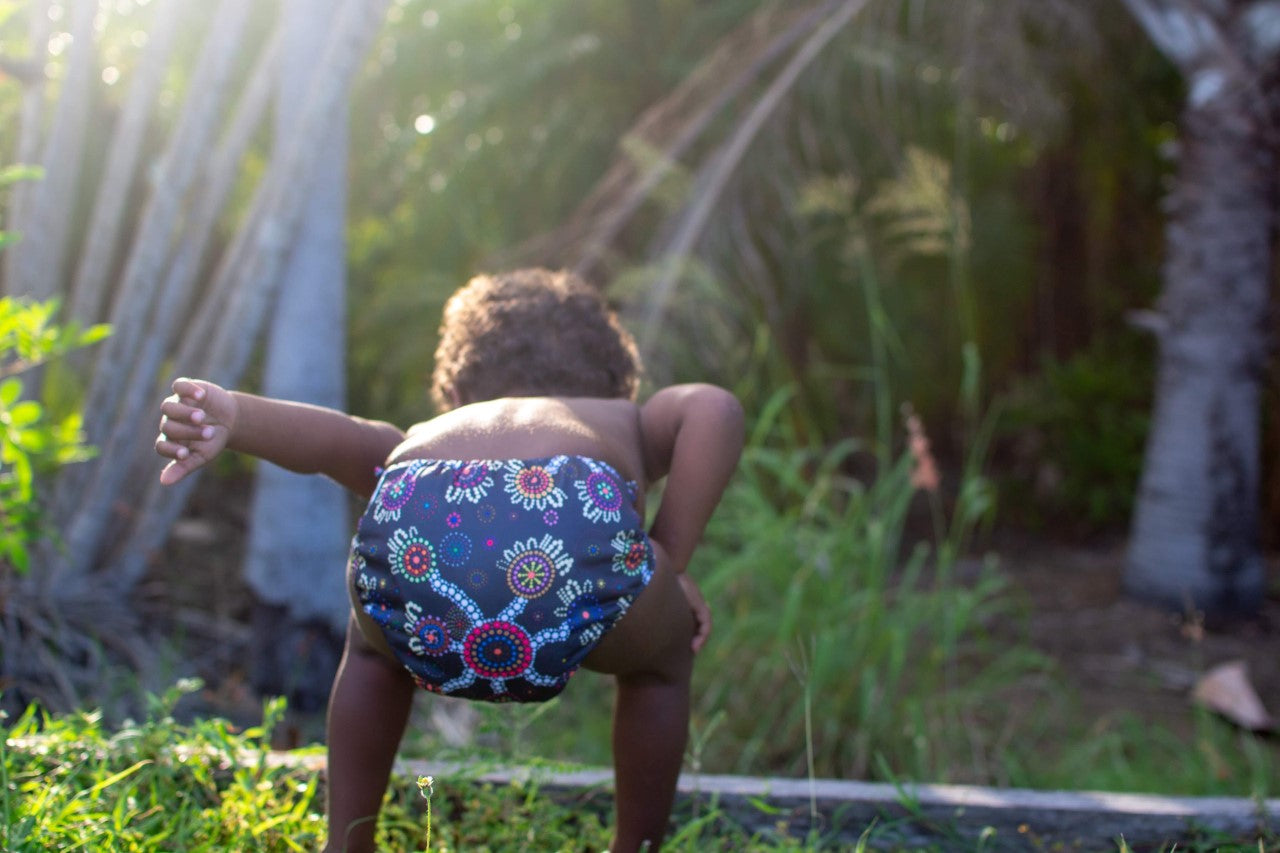Washing routine

Cloth nappies have come a long way since the time of our parents and older generations. Gone are the days of soaking nappy squares, pins and plastic pilchers! Modern cloth nappies are simple and easy to wash and care for, though establishing a care routine can seem daunting when you are beginning cloth nappies. Our routine outline below can provide the foundations for you to establish a routine that works in your home.
Items needed for the optimal washing and care routine.
- Basket for dry pail (plastic or coated metal with lots of holes for adequate ventiation).
- Good quality laundry detergent or booster if you use cold water or eco-detergent
- Washing machine hooked up to/can generate hot water (is beneficial but not essential)
- Way to remove poop from the nappies (silicone scrubbing brush or scraper is perfect)
The Basics
Preparing new inserts and trifoldsBamboo fabric requires numerous washes to increase absorbency and remove any residule residue remaining from the manufacturing process. There are two ways to increase absorbency - the easiest way is to soak inserts and trifolds overnight in water and then pop through a long hot wash the following day, the second way is to put the inserts through 2 to 3 washes with your general laundry prior to drying for use.
Night nappies
Night nappies require to be immediately rinsed in the morning after use. Failure to do so can cause fabric deterioration due to the prolonged exposure of ammonia in urine.
Newborn (breastfed) baby poo is water soluble, this means that with a good wash routine it will wash out easily and without staining.
Establishing A Routine
1. Storing soiled nappies
Soiled nappies can be stored in a dry pail. A dry pail is a basket that has lots of holes to allow for adequate ventilation. This method has been proven to prevent bacterial growth and mould build up.
Prior to dry pailing you must remove the majority of faecal matter from the nappies. There are many ways to do this, you can simply tip the poop into the toilet or if it is too soft to 'plop' into the toilet you can use toilet paper or dedicated silicone scraper to scrape the poop into the toilet and then use a scrubbing brush to give the nappy a quick scrub and rinse in water to remove the remaining poop from the nappy lining. The nappy can then be dry pailed.
2. Pre-washing your nappies
At the end of each day or at most every second day put all soiled nappies through a pre-wash. This pre-wash helps to open the fabric fibres and remove the majority of the urine and faecal matter within your nappies. It is recommended to use half the recommended dose of laundry detergent for a regular load and use a quick/pre-wash cycle on your machine. These nappies can then be stored in a seperate pail until you have enough nappies to do a main wash (every 2 to 3 days) OR you can add regular laundry with the pre-washed nappies for a main wash.
3. Main Wash tips
For a main wash choose the longest cycle on your machine for heavily soiled loads (e.g. heavy, jeans) and use the recommended amount of detergent for a heavily soiled load. A hot wash will work most efficiently (do not exceed 60 degrees celsius). If you have chosen to use an eco-detergent or only have cold water for the wash, you may need to add a laundry booster for the main wash to get optimal results.
4. Drying your nappies
Drying To dry your nappies you can either hang them on the clothes line or put them in the tumble dryer. When hanging them on the line to dry it is important to remember not to hang nappy shells (the pretty patterned waterproof part of the nappy) in direct sunlight for prolonged periods of time. Hang them over the line with the patterned fabric facing down, away from sunlight. This will help prevent fading. Inserts can be hung in direct sunlight.
To use a clothes dryer we recommend putting the shells on a low heat and once they have dried you can use a medium heat to dry the inserts.
5. Storing clean nappies
Clean nappies should be stored in a dry environment and out of direct sunlight. If storing for a long time (for example, between children) we recommend using an airtight bag and storing in a dark place - remember to ensure nappies are clean and completely dry before storing away for a long period of time.
For more tips on stains, detergent and more visit our care page HERE




Comments